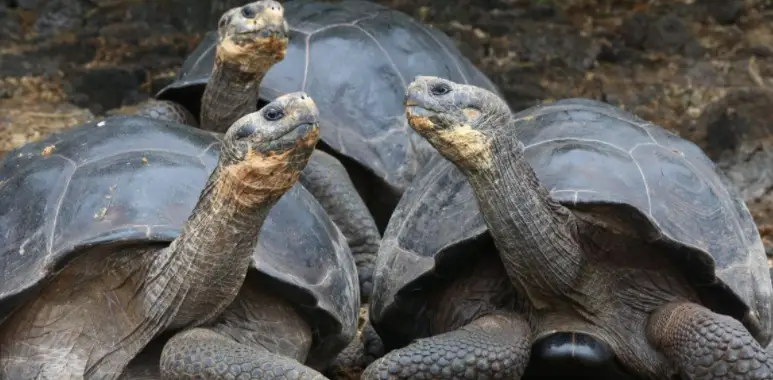The Galapagos Islands are located in the Pacific Ocean 1000km from the South American continent. These 19 islands are called the unique living museum of evolution. They are located in the collision of three sea currents, a place of constant seismic and volcanic activity that has led to unusual fauna, huge turtles, terrestrial iguanas and various species of birds. This inspired Charles Darwin after 3 years spent on land in the Galapagos to formulate the theory of evolution after visiting the island.
Santa Cruz Island is the most famous island in this archipelago. Santa Cruz is named after the Christian cross, which is home to the largest human conglomerate in the Galapagos and home to the islands’ main research center, Darwin Station. The island has a large population of turtles, flamingos and iguanas and offers attractive places for surfing and diving. At the Darwin Research Center, the last specimen of a giant tortoise was found.
Endemic fauna includes unique reptiles and birds. All reptiles except two sea turtles are endemic species. These include the Galapagos giant tortoise with 11 subspecies on various islands, all of which are endangered, terrestrial iguanas and sea iguanas. There are 57 species of birds, 26 of which are endemic, six species of mammals, and marine fauna includes several species of sharks, whales and fish. On this island you can see interesting animals, you can swim watching turtles, sea iguanas, colorful crabs and reef sharks. Fernandin Island is home to the rare or flightless cormorant of the Galapagos, an unusual animal that lives only on the islands and is the only species of its kind that has lost its ability to fly.
When Charles Darwin visited the Galapagos Islands in 1835, he discovered a volcanic archipelago home to 15 different species of large turtles. Today, after killing more than 100,000 of these strange creatures, we have only about 10 species, and many of them are endangered. One species has not been seen for more than a century.
The giant Fernando tortoise (Chelonoidis phantasticus) was last observed in 1906. No other turtles of this species have been found on Fernanda Island since then, and there have been many questions about whether it is extinct. After being classified as critically endangered and almost extinct, scientists have finally found another such turtle. The expedition spotted the turtle in a remote part of the island. In 2018, for the first time in more than 100 years, a baby turtle was spotted in the Galapagos. Black rats contributed to the eradication of giant tortoise eggs by eating them. That had led to the brink of extinction of giant tortoise eggs.
Unlike many other species of giant tortoises that have become prey, the greatest threat to the Ferdinand giant tortoise is not of human origin. Believe it or not, the biggest threat to this species is actually the ruthless environment in which it lives. The species is considered critically endangered because experts believe that these creatures suffer from the lava on this volcanic island.


